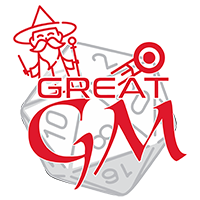Bone-Eater Disease
This disease is caused by a parasite who eats away the facial bones of a person in order to create its nest. Those affected by it usually only realise what is going on once one of their cheekbones has been eaten away and eggs have hatched in their place. The condition becomes apparent when the little larvae crawl out of a person's eye, by which point it is nearly impossible to get rid of the parasite.
Bone-Eater Disease is often fatal. However, modern technology has improved the survival rate. Early diagnosis allows for complete eradication of the parasite, and the damage is reparable with facial-reconstructive surgery.
Transmission & Vectors
Bone-Eater Disease is transmitted through careless handling of oxidised metals. The adult parasite lays dormant on rusty surfaces. It is too small to be seen with the naked eye. People who touch rust with their bare hands and then touch their face are at risk of planting parasites on their skin.
Causes
Bone-Eater Disease is caused by the parasite Calcuture Spamodio, popularly known as Calciofago. Calciofagos are tiny parasites invisible to the naked eye. They have six sharp legs that are strong enough to carve through bone, and a mouth capable of biting and digesting the bone, turning it into a soft pulp where it lays its eggs. Calciofagos can lay up to 300 eggs per day.
Once the eggs hatch, they feed on the soft digested bone and excrete a substance that, although similar to bone, is actually toxic to the host. The substance usually takes the shape of the lost bone, and since it is of a similar hardness, this means people often do not notice what is going on until it is too late. The substance looks black when hardened, making it easily distinguishable from real bones when looked at directly.
Symptoms
Most cases of Bone-Eater disease have no symptoms at first. The Calciofagos are able to act without being noticed by the host, bypassing pain sensors. The infection only becomes apparent when there is such a great number of Calciofagos under the host's skin that they start to come out through the eyes. By that point, they have likely replaced most of the cheekbone and eye socked with the toxic structure.
It is at that point that other signs of the disease finally become apparent. The toxicity of the black structure causes fevers, headaches, numbness in the area affected, loss of appetite and loss of sight if it has spread to the eye socket. Hosts deteriorate rapidly from that point on, and are usually dead before the Calciofagos have a change to eat and replace the skull bones.
Treatment
The Calciofagos can be killed with a combination of drugs (some ingested, some applied in the form of a face cream to the affected area) in about a week. The real problem lies in getting rid of the black bone they leave behind.
The only modern treatment with a chance of being effective consists of surgically removing all the black bone and replacing it with a safe substitute. It is not always possible to do so (depending on the amount of black bone present, as well as its location), and since it can only be safely done once all Calciofagos are dead, most patients die from the toxic black bone before they can even consider surgery (the one week wait to kill the Calciofagos is more then enough to kill them too).
Prognosis
Currently the mortality rate of Bone-Eating Disease is at 75% in the most developed countries.
Those who do survive the infection usually end up with scars across their cheekbones and/or eye sockets. They may also end up blind in at least one eye. In some cases, the synthetic replacement bone is not perfectly aligned, causing the eyeball to sink down the cheek.
Prevention
The most effective way to prevent Bone-Eating Disease is to wear gloves when dealing with rusty materials, and to wash hands thoroughly afterwards.
Type
Parasitic
Origin
Natural
Cycle
Short-term
Rarity
Uncommon
Remove these ads. Join the Worldbuilders Guild









Comments